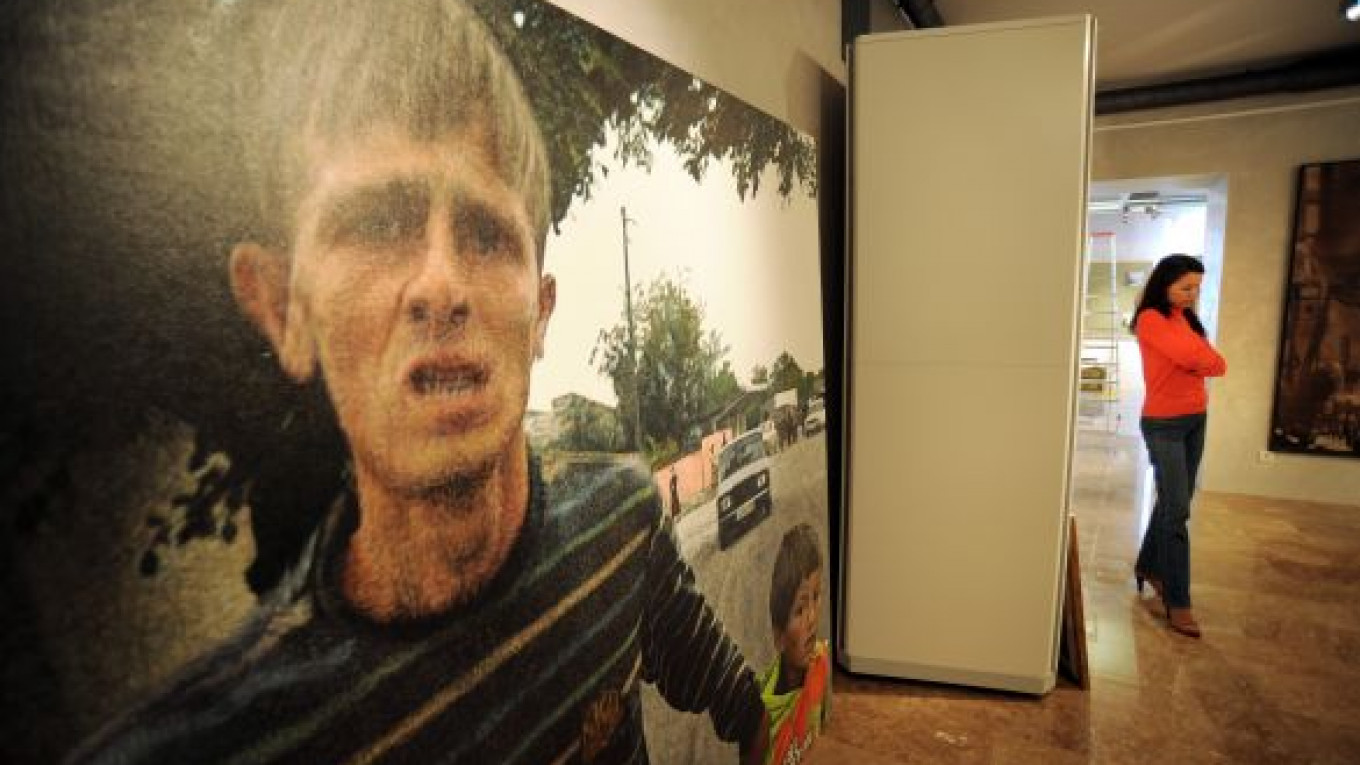ST. PETERSBURG — Despite St. Petersburg’s reputation as the cultural capital of Russia, it wasn’t until early last month that the city had a museum of contemporary art.
Now it has two with the opening of the Erarta Museum and Gallery of Contemporary Art — a five-floor complex dedicated to contemporary Russian art.
An unprecedented project that has taken three years of preparation, it is the largest contemporary art space in Russia, with more than 2,000 works by 140 artists on show in the gallery alone. The striking building housing Erarta contains both a museum of not-for-sale works alongside a gallery where works will be sold.
Erarta is the second private art museum to open on Vasilyevsky Island this month.
Novy Muzei, or New Museum, opened June 4, becoming the first contemporary art museum in the city and despite its unprepossessing location above a coffee shop and neon sex shop sign, it is an extraordinary space.
Two floors are filled with a staggering range of work by Russian artists, mainly from the mid- to late-20th century, who are only now being recognized as big names. The owner, Aslan Chekhoyev, has quietly been collecting art for years and bought the building well before he had the idea for the museum.
The inaccessibility of art from the Soviet period is part of the allure for Chekhoyev. He considers his role important in safeguarding these works from near obliteration, saying it is a “very important period, which needs further study.”
Meanwhile, Erarta is the brainchild of Marina Varvarina, the widow of wealthy businessman Dmitry Varvarin who was murdered in St. Petersburg in 2000. The ambitious project is housed in a striking yellow building with white columns that has been divided into two wings — the right wing houses the gallery, and the left the museum. The building has undergone a complete overhaul to transform it into a modern space for its new contents. It is hard to miss, juxtaposed opposite the tired-looking Soviet Palace of Culture.
“The need for a museum and gallery of modern art has been evident to everyone for some time,” said Mikhail Ovchinnikov, the museum’s curator.
To find new talent, Erarta held a contest last year. Together with the gallery’s curator, Viktoria Dudenko, Ovchinnikov traveled extensively throughout Russia hunting for undiscovered talent.
“We promised to exhibit works from the competition for six months, which is why at the moment the gallery is only half-occupied,” Dudenko said. Eventually, the gallery will spread across the five floors parallel to the museum wing, she said.
The goal of both the museum and the gallery remains to seek out new talent in remote regions of Russia, as well as in more developed areas. According to Dudenko, this approach is unheard of: “Until now, if an artist thought they were any good, they had to come to either Moscow or St. Petersburg and rent a studio, otherwise simply nobody would know about them.”
A recent trip to the southern Russian city of Stavropol uncovered the work of Pyotr Gorban, who painted prolifically in the 1980s. Impressed by the deceased artist’s work, Ovchinnikov snapped up the entire collection from his family, and it is now exhibited on the fifth floor of the museum wing. The works are riveting and entertaining to look at. A series of small satirical sketches with thick brush strokes on small canvases hang along one wall. Particularly engaging is a work titled “Bread” depicting an overweight woman with red nails standing proudly behind a counter.
Ovchinnikov believes that there is only one prerequisite for an artist working today: to have “objective ideas as art continues to evolve and be redefined.”
“We want to leave a legacy that will delight viewers for centuries to come,” Ovchinnikov said at a news conference last month. “Art should enrich the viewer and bring new impressions and experiences into their lives.”
The project’s mission to promote up-and-coming talent makes it possible for unknown artists to exhibit their work alongside established ones. Erarta encourages artists with a budding talent to send in slides of their work, and promises that even if it does “not fit the current program,” it will be exhibited on Erarta’s site on the “Artist Boulevard,” where work can be put up for sale.
Ovchinnikov says the museum is not looking for a particular mold or style, but is captivated by “freedom, originality and craftsmanship.”
“Even people in Moscow believe this project is five steps ahead of what they have, and they have a much more developed gallery culture. … Essentially, we didn’t have anything until now,” said Dudenko, noting that it has been difficult to promote the project in the Russian art press, because “there are simply no magazines in which to advertise.”
Erarta, 2 29th Line of Vasilyevsky Island. Metro Vasileostrovskaya. Tel. (812) 324-0909. St. Petersburg. www.erarta.com.
Novy Muzei, 29 6th Line of Vasilyevsky Island. Metro Vasileostrovskaya. Tel. (812) 323-5090. St. Petersburg. www.novymuseum.ru.
A Message from The Moscow Times:
Dear readers,
We are facing unprecedented challenges. Russia's Prosecutor General's Office has designated The Moscow Times as an "undesirable" organization, criminalizing our work and putting our staff at risk of prosecution. This follows our earlier unjust labeling as a "foreign agent."
These actions are direct attempts to silence independent journalism in Russia. The authorities claim our work "discredits the decisions of the Russian leadership." We see things differently: we strive to provide accurate, unbiased reporting on Russia.
We, the journalists of The Moscow Times, refuse to be silenced. But to continue our work, we need your help.
Your support, no matter how small, makes a world of difference. If you can, please support us monthly starting from just $2. It's quick to set up, and every contribution makes a significant impact.
By supporting The Moscow Times, you're defending open, independent journalism in the face of repression. Thank you for standing with us.
Remind me later.


